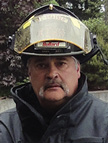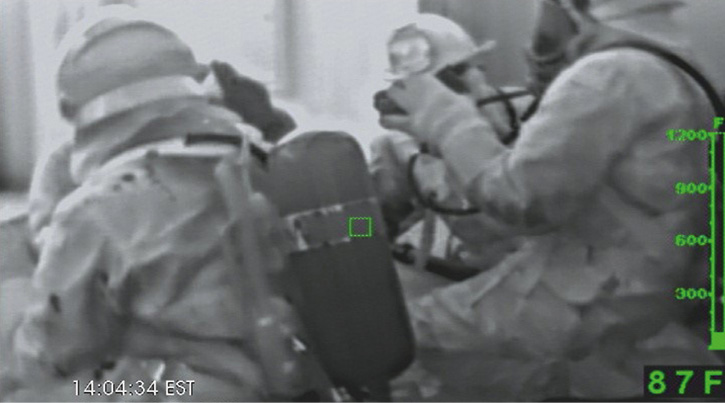
BY MANFRED KIHN

When I sit down each month to write this column, I try to provide you with ideas on the different applications for thermal imaging and how a thermal imager (TI) can help make a firefighter’s job safer and a little easier.
These are unprecedented times for all of us, and although fire departments may not be responding to as many structural calls as they are emergency medical services calls, it’s even more important to continue training with the TI to ensure firefighters stay mentally focused. It’s critical that firefighters keep their TI skills sharp for when a structural fire call does come in because the TI tool could potentially save a life. Let’s look at training firefighters to use the TI safely and the risks associated with interpreting what the TI is telling you.
Related Content
- Thermal Imaging: How to Prevent the “White Hat Syndrome”
- Thermal Imaging: Thermal Imagers Not Just for the Crews
- Thermal Imaging Archive
Firefighters using TIs must understand the general risks associated with a TI and how to avoid those risks. Misuse of a TI, as with any firefighting tool, can have disastrous consequences. The most common mistake firefighters make when using a TI is thinking it’s okay to stand or walk in an unsafe environment.
Let’s explore this behavior in detail. When I was first training to be a firefighter many years ago, I was taught to stay low and crawl in hostile environments to avoid exposure to heat and dangers you could not see. In my younger days as a firefighter, we didn’t have the protective equipment firefighters have today. Materials used for firefighter turnout gear have become so advanced and durable that firefighters feel comfortable walking or standing in hot environments. Years ago, firefighters had to stay low because their gear could not provide the respiratory or thermal protection against a fire. Think about the last training you conducted. Did you walk around the burn building while you were teaching your young student firefighters to crawl? During training exercises, trainers need to get low and crawl, showing students how to successfully and safely maneuver through an aggressive fire.

1 During a training exercise, firefighters are staying low and assessing the conditions with a TI. (Photo courtesy of Bullard.)
Crawling helps firefighters navigate through a structure by avoiding the usual items you encounter like furniture, debris, and stairs, except when you are in a smoke-filled environment, you can’t see those things; the TI becomes your eyes to see the hazards you couldn’t see. Here’s where this false sense of security comes in. The TI gives you the ability to see the environment, which makes firefighters think that they can navigate a structure by walking through it when using a TI. False!
Here’s the reason it’s important to never abandon your basic firefighter training: You are maneuvering through a structure with a high-powered, cutting-edge tool that gives you sight. Standing and walking in hazardous environments can have dangerous results. First and foremost, it’s important to remember that staying low and crawling help firefighters limit their exposure to dangerous gases that are forming inside a structure. Second, some hazards are difficult to identify using a TI such as a hole in the floor or furniture in a room with a constant temperature. When using a TI, you no longer have use of your peripheral vision that helps firefighters identify risks. A TI can only detect a potential risk when you point the imager directly at the risk. A TI essentially gives firefighters tunnel vision.
S-SCAN METHOD
How do we avoid the tunnel vision effect when using a TI? We teach firefighters how to overcome this restricted feature of the TI by enlarging the firefighter’s field of view by using the S-scan method. This method is a simple search exercise that shows firefighters how to scan an entire room using the TI to evaluate the fire conditions and search for victims. When using the S-scan method, the firefighter moves the TI from shoulder to shoulder, scanning near the ceiling, then across the middle of the wall, then down at the floor. The shoulder-to-shoulder, high-middle-low scan creates an S-shaped pattern. The firefighter scans the majority of the room using a TI, gaining a more complete view of the structure, room by room.
The use of a TI gives firefighters a false sense of security. It’s up to all the trainers and senior firefighters, like me, who have been in the service for many years to constantly remind our young students to not stand or walk through a structure fire using a TI.
In every column, I stress the importance of training often using a TI. It’s critical to perform training drills with a TI in the most realistic manner, meaning always stay low maneuvering through dark and smoky conditions. When running training drills, repetition is key to learning. Just like an athlete uses the same training drills day in and day out, firefighters need to practice staying low and crawling while using a TI. Don’t let your firefighters assume they are safe because the TI is allowing them to see in environments where visibility is compromised. Repetition, repetition, repetition saves lives.
TIs are regularly touted as life-saving tools, and deservedly so. The key to training with a TI is to train regularly and, most importantly, train using basic firefighting skills while keeping in mind the limitations of thermal imaging technology. You can achieve successful and safe training when you understand the risks involved with the tools being used. The TI is a tool that needs to be with you on every call, but always remember that this tool has limitations, and no tool should ever take the place of the skills you learn in firefighting training.
Manfred Kihn is a 19-year veteran of the fire service, having served as an ambulance officer, emergency services specialist, firefighter, captain, and fire chief. He has been a member of Bullard’s Emergency Responder team since 2005 and is the company’s fire training specialist for thermal imaging technology. He is certified through the Law Enforcement Thermographers’ Association (LETA) as a thermal imaging instructor and is a recipient of the Ontario Medal for Firefighters Bravery. If you have questions about thermal imaging, you can e-mail him at manfred_kihn@bullard.com.

